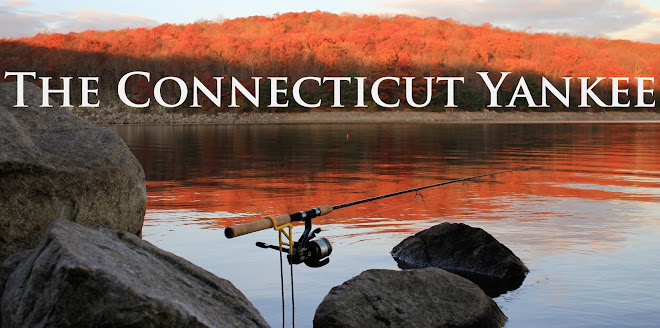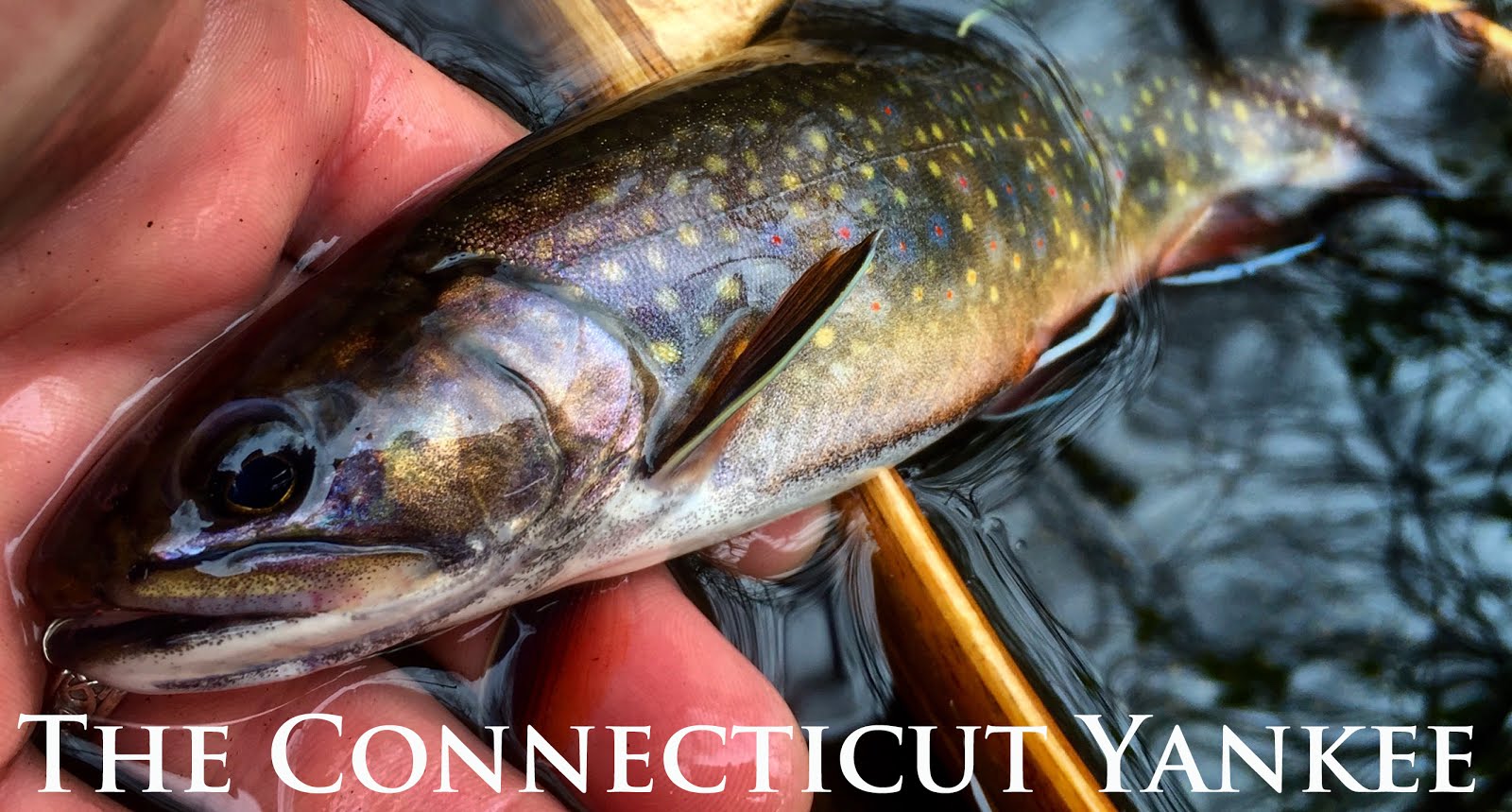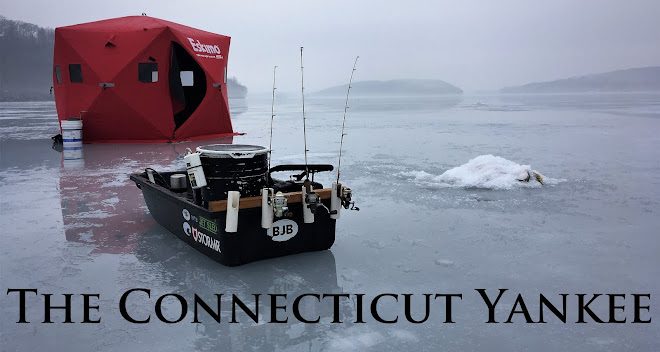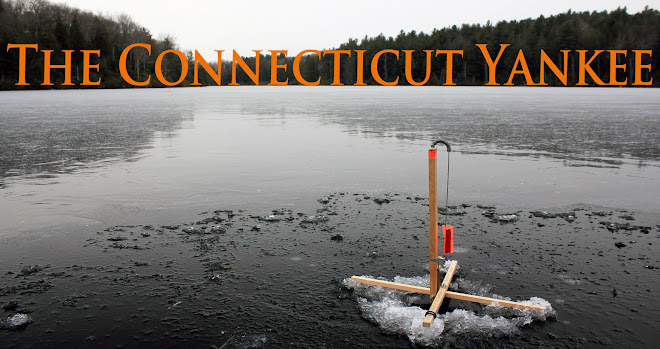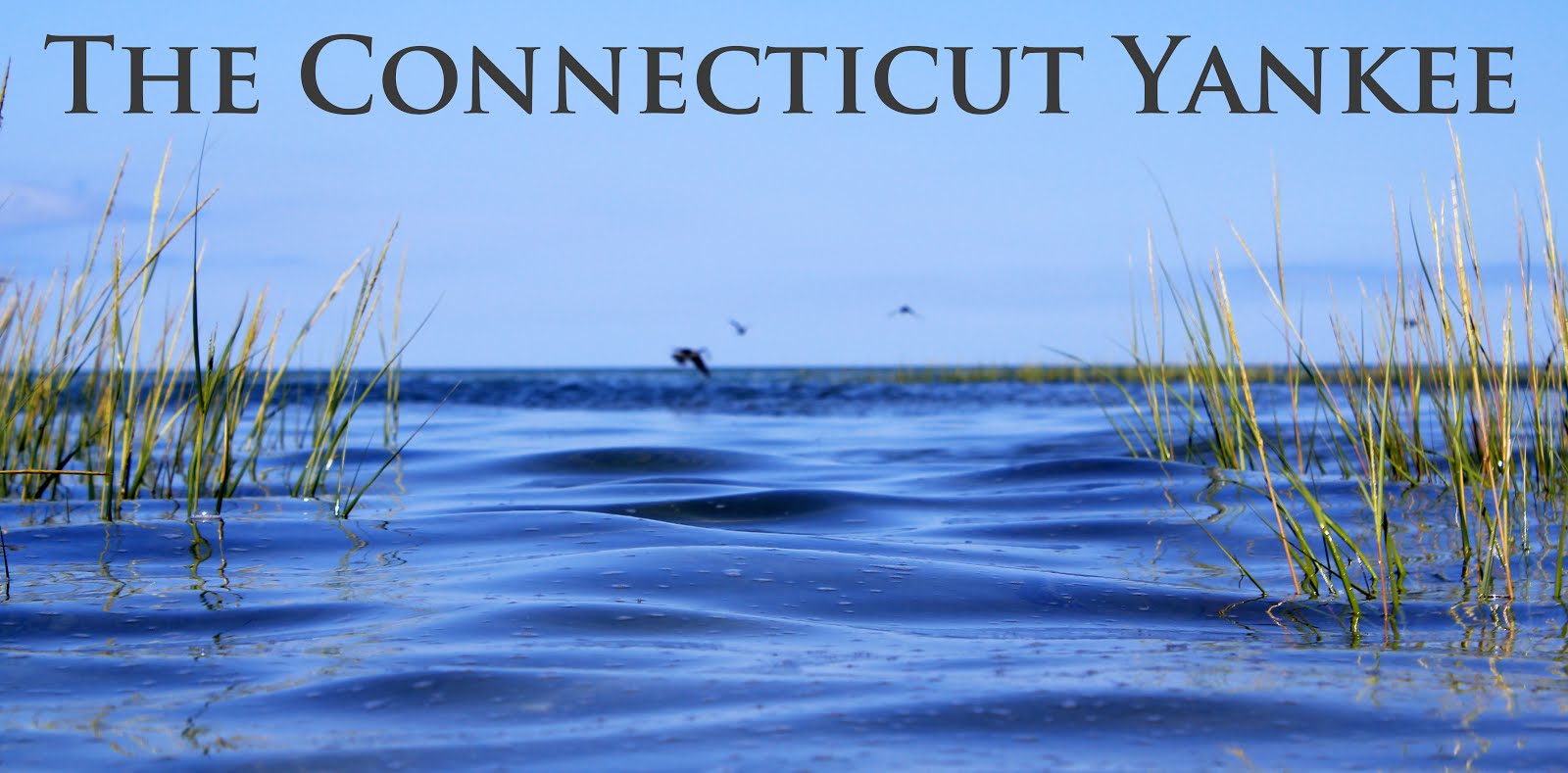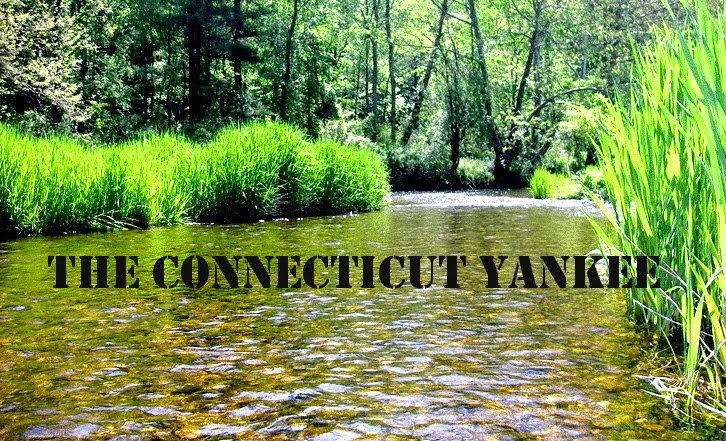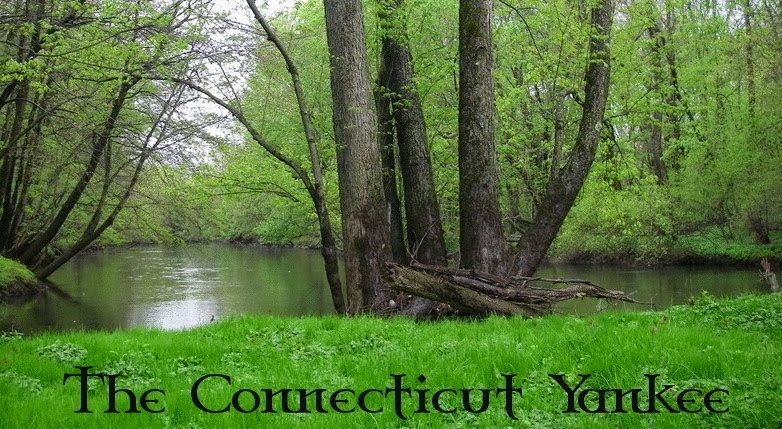Editor’s
note: My friend Chad Wilde has a way with words. His guest posts over the years
are some of the most read works on this site. This story is no exception—an enjoyable
throwback that comes at a time when we’re looking for healthy distractions from
what is going on in the world. Enjoy and stay safe.
“whither
thou wish inside
we will
follow” – Will Oldham
Rarely do gifts given stand the unwavering
test of time. Things are lost, sadly. Or used up. I only have a handful of
physical items I can hand to you, point to, and say: I’ve got a story about
where that came from, and have it come out being any kind of story at all.
I have a pocketknife/money clip that’s
been on my person every single day for better than a decade, that’s one of them.
A pair of gloves, never worn, given me by a special person to celebrate a
particular accomplishment. A tip-up with words wood burned carefully into its
cross sticks to tell me that the gods do not deduct from my allotted span the
time spent in fishing.
I have a journal given to me by my
children inscribed with the words, “Don’t Try.”
I have a pocket watch my wife gave me on our wedding day. This gift I
only wear when it fits the appropriate outfit, it doesn’t go with Carhartt
overalls so it’s pretty rare that I break it out. Its face reads, “Whither thou
goest I will go.”
There are stories behind all these things, good ones.
These things, they mean a great deal
to me. This is why they stand the test of time. And time itself has carved even
greater meaning on them. Etched in deeply, seated in relationship between gift
giver and recipient and then in turn the object in question.
Of all these special gifts, the one
that has probably had the longest and deepest impact on me has been the fly rod
my father gave me sometime in the early 2000's. At that point in my life, I
desperately needed new inspiration, and in that rod, I found it.
I had graduated college and found
myself on unsteady footing in the wide world. Suddenly, life wasn’t constrained
in the walls of a classroom. I had no measure of performance to guide me. Was I getting an A? No, lord no.
But was I at least passing as I stepped out into real life? I wasn’t
sure I could answer that in the affirmative and none were grading my endeavors
to tell.
I didn’t know much about anything,
contrary to what my diploma said. I had read a lot of great books and written much
to dissect, evaluate, and explain them. I was familiar with the classics, romantic
poets, the beats. I was well read on Vietnam era literature and Charles Bukowski. I had an inkling of what mechanical
vocabulary I should use should I ever find myself at a cocktail party where
poetry came up in conversation. Luckily, it never did.
I stood on the cusp of the rest of my
life with a degree in English literature, a pile of student loan debt, and a
job doing custodial work. Those quaint editor jobs in the big city were for the
trust fund kids whose parents could afford a loft’s rent for them, not me. So,
I took what work I could find and just started working. I’d figure it out, that
was the angle.
I didn’t have a clue what I was going
to do with the rest of my life. Naturally, with such confusion throbbing on me,
I did what things I did know to do. One of these things was fishing. In those
days, I used an ultralight spinning outfit.
I got other slightly less poor paying
jobs to put on my pitiful resume. I got a crappy apartment. I got out on my
own, and I got some better gear to be a better fisherman. I viewed my resume as
my report card, and I tried to make my C’s look like at least B’s through
flowery language. You can’t put lipstick on a pig though. I didn’t know what to
really do, so I just went fishing.
I found that fishing was somehow
different in those days. I was in my twenties and I was well read if not well
educated in any realistic sense of these words. I considered myself reasonably
intelligent. I soon found that as I applied myself to fishing, I was pretty
good at it and improving. I did so, every
time out.
It wasn’t long after that I was
getting straight A’s on my spin rod. And then, my father gave me my first fly
rod.
Fly fishing had always been somewhat
of an exotic dexterity to me. Some mysterious craft, practiced by men who
tended to avoid the places I fished. However, I would glance them, these fly
fishers, at times. I’d see them casting and working their lines and I’d wonder
how the hell they did it.
It seemed some secret practice to me. It
was beautiful to watch. Delicate and foursquare, an art form wrapped in a
leisure activity. It was utterly unapproachable I felt. But it really
wasn’t.
My father, in his wisdom, must have
seen that I needed something. On my birthday, October 9th, he gave
me a long tube and small box in gift wrapping.
It was an LL Bean Quest fly rod with a matching reel. It was a 5-weight rod, and it was 7’6”
long. The reel came spooled with fly
line and a leader already affixed to the business end.
I will never forget receiving this
gift. When I opened the plastic tube by removing the cap, it made a deeply
satisfying audible popping sound. Inside the tube was a rod sock and inside the
sock was the rod itself. As I removed the sock from the tube and then the rod
from the sock, I was struck by a sentiment that rings true all these years
later: it was a thing, wrapped in a thing, wrapped in a thing.
It was somehow special to be so. These
layers coming away until the inner core was unsheathed fully, a rod to then be fished.
To remove and use it, or put it away, required care. It felt more important
than the spinning rods I’d always used.
I thanked my dad profusely and told
him he had given me a new hobby. I was motivated suddenly. At this caesura of my life, a page was
turning. New form to emerge on a new blankness that stretched for who knew how
long in front of me.
At the time, I lived in Manchester,
CT. I went immediately to Farrs Sporting Goods. This wonderful store sold and
still sells everything from field hockey sticks and skateboards to camping and
fishing gear. In the fishing section, they had a rotating display case with
flies in it. Each fly was presented on a small card in the case. Written on the
cards were the fly’s name and a strange number, a reference to which bin it
could be found in the area below the display case.
I had no idea what a March Brown #14
was or an Adams #12, but they both looked fishy to me. I took three of each. I could understand a
streamer fly, it being a minnow imitation. I was accustomed to using Rapalas
and inline spinners that also imitate minnows. I took two streamers, both size
#6 white Zonkers. I noticed at the bottom of the display there were bigger
flies, intended for bass fishing. One caught my attention. It was a deer hair
mouse fly. It had a rawhide tail and tiny little ears. I took one of those and also
bought a fly box.
After this spending spree I had some
flies and a fly rod, but was fresh out of cash. Being out of cash was no big
deal for me. I generally was at the time, 13 out of any given 14 days (the 14th
being pay day, when I was ever so briefly flush with the stuff).
In my car, a 1988 Cherokee Sport, I arranged my fly collection in
one neat row of the box—six dry flies, two streamers, and one deer hair mouse. “There,”
I thought to myself. Nine flies. There was a lot of room left in the box.
In my hometown of Willington, there is
a TMA or Trout Management Area that was closed to spin fishing. 'Fly Fishing
Only' read the signs posted everywhere. Naturally, my friends and I considered
it civil disobedience to fish this water with our spin gear.
I knew enough to know this stretch was
the best water in the river and I didn’t see why it was relegated only to those
who fished with flies. I also knew enough, through experience, that there were
fish in that water all year round. Willing trout that rarely saw a Mepps
Spinner. Poach and release was my mantra.
I was crafty and sly in my journeys
there. I never got caught and I caught a
lot of trout on spinners and, if that failed, live bait.
The day I got my first fly rod, I
considered stampeding directly into the TMA with it and my nine flies, but
wisely figured it best to ensure I could actually do this type of fishing. I
went to a field, removed the thing from the thing from the thing, and rigged it
up. I tied on one of my March Brown #14’s. As I stripped line off the reel, it
made a clicking sound. And then, with the line pooled at my firm set feet, I
began.
I was always an athlete. I have good coordination,
and this helped me to quickly pick up a basic modicum of ability to cast fly
line. I pulled the fly line back behind me as I’d seen done, the line unfurled
backwards. When the line was behind me, I thrust forward and it flew out in
front of me. “Holy shit,” I thought. “I can do this.” I made roughly three more
practice casts before heading to TMA. Yes, of course I could do this.
I walked purposefully down the
railroad tracks that ran adjacent to the TMA.
I made my footsteps firm. I didn’t need stealth since I was about to
legally fish the TMA for the first time. I crashed through the bracken and
underbrush and barreled towards the gleaming river at a deep cut bend that I
knew held fish.
My very first backcast instantly and predictably
entangled my fly and leader in a tree limb behind me. “Ah,” I thought. I’m not in a blissfully open
field. I tried to get the fly out of the branches it was tangled in, savagely
yanking on it until it broke it off. Now, down to eight flies and a shorter, stouter
leader, I did what anyone would do. I tied on another March Brown #14 and
marched directly into the river.
Mind you, I had no waders, and the
water was cold. It was October in New
England, but I didn’t care. I waded far enough out into the flow that I could
create a cast. Knowing nothing about drift, and less about how to mend fly line,
I was instantly overmatched. I kept at it though, working until my feet were
brutal cold and numb in my hiking boots. I was about to call it a day and
retreat with my eight fly collection still intact when, at the far end of a drift, a
miracle happened.
The March Brown #14 hung there in the
current, chugging along as no creature in nature ever has. Something rose from
the flow of the river and nipped at the fly.
I saw its rise form clearly, and the
dimple left on the sheen of the river’s face. I missed the hookset but gained
heart. I fired another poor cast to the general vicinity. As the fly drifted, the
fish rose again, and took. I yanked back to set and the hook somehow found purchase.
Frantically, I stripped in line and,
there at my cold feet, thrashed a very respectable fallfish. The blank page had
a new notation. I had caught a fish on a fly rod. I was proud of myself. That night, I called
and told my dad.
I began to fish in stillwater, ponds I
knew to hold bluegill and bass. I caught enough panfish to keep me going back
before fall gave way to winter. I noted that bass apparently do not like Adams
#12s. On some of those 14th
days, when I was flush with cash, I’d return to Farrs Sporting Goods to buy
more flies. I arranged them in my box. I liked the orderly way they’d fit into
tidy rows. For Christmas that year, I asked for waders.
When spring came, I started bringing
both my fly and spin rod to the rivers and ponds I fished, in my new waders of
course. I was more successful with the spin rod, and it was just too easy to
use. I caught a lot of trout on Rapalas. I found myself picking up the fly rod
on the walk back to the Jeep from where I’d end up having stashed it. When I
did use the fly rod, I caught more tree limbs than fish and thus depleted my
paltry collection of flies
I had yet to catch a good fish on a
fly, even by my own low standards. I’d caught fish, just nothing that deserved breaking
out the disposable camera for, though I did anyway.
As spring turned to summer, I stopped
trout fishing entirely and took to the places they lived to swim rather than
fish. There is nothing quite like swimming in a trout stream. Having lived in northeastern
Connecticut all my life, I know several local chest-deep pools to do so. In
those days, rope swings still hung from opportune limbs over deep enough water
to swing from them.
I am an avid swimmer and I prefer to
swim in natural environments, though a pool will do in a pinch. One such spot
was a reservoir with a public beach. Both smallmouth and largemouth bass swam
there, some were pretty decent fish. I’d generally go there on summer evenings
at dusk for a quick dip. After swimming, I’d enjoy the feeling of my skin
drying with all the windows in the car down, with a good song playing on the radio and a road
soda.
One night, as full dark came in, I
stood waist deep in the water and looked out across the reservoir. I ran my fingers through my hair, scratched
my wet head. I began to make a fly casting motion with my empty hand for some
serendipitous reason. I peeked back over my shoulder and realized I had backcast
room for days. I still had the mouse fly in my box.
I started going to that reservoir more
often, at night. I’d bring the fly rod only, taking pleasure in assembling it. I
learned to tie leaders together. And each time out I learned to enjoy just the
process of it. In the dark, I learned to feel a fly rod load. I caught nothing but,
in my heart, I knew it would come if I did it enough.
Somehow, I knew for me there was much
to be said of what those men I used to watch did. What I had considered sorcery
in form, elegance in some way. I viewed fly fishing as a craft and an art. I
wanted to know it better. I began to take pleasure in just casting a fly rod. I
did it in the parking lot of my shitty apartment.
Then, one night, my younger brother
and I made a run out to the reservoir. We swam, and then fished. I was wading
down the beach trying to double haul line and chuck the mouse as close to the
shadow of a dock as I could. It was a very quiet night and I could tell how the
fly was working by its sound.
There was enough ambient light to show
the slick black, wet silken surface of the water’s ripples. I could see the dim
outline of the path the mouse fly took back to me as I stripped it in. Each
time I worked the fly, it came back empty and I picked up the line and did my
best to shoot it back out there.
The thing was, and I knew it deep
down, my grades were improving. I was giving myself this gift of learning. I
deserved it. My casts grew a bit longer, my leader straightened a bit more. I
couldn’t see this occurring full well in the dark, but I could feel it.
And that particular night, as the
mouse fly paused between strips, a fish took it. I can still clearly hear its
take in my mind. An audible gulping sound, and an eruption on the surface of
the water, too close to where I knew the mouse fly to be for that eruption to
be anything but a big fish eating.
And I set on it in the dark and I knew
I was connected to the first real fish I’d hooked on my fly rod. The ambient
light showed a boil on the water.
In the dark, I could feel the bass
leaping from the water, splashing back down, and then running. By the run alone,
I knew it was a smallmouth. No largemouth runs like a smallmouth. The
smallmouth is faster and more urgent on the line. I played the fish well, gave
it no quarter, and landed it on the sandy beach.
Elated, I lipped the fish. I held it
in the water and called into the night as quietly as I could for my brother,
who came and took my picture with the fish using my disposable camera.
I took another picture, of just the
fish this time, the disposable camera flash echoing off the amber golden flank
of the bass. My shivering, rollicking gladness quaking, all that happiness in
the dark night frozen there forever in the harsh momentary illumination. It was
amazing. I held the fish for a moment longer than needed, and then it kicked its tail and dissipated
into the dark water.
I took the camera to the drug store
and had the film developed. In the car, I took out the pictures, found the one
of just the fish and held it. It was a 19” smallmouth bass, to this day the
biggest I’ve taken on a fly rod. I had measured it against the rod and cut a
scratch into the blank that I later measured at home with a yard stick. It was
such a gift.
I may lose my pocketknife. God forbid
if I lost my pocket watch. These things may happen. I’d be busted up if either
did so, but they could happen by some ill twist of fate. But I will never, ever
lose that fly rod my father gave me. All these years later, I don’t even know
how many rods I currently own, but that LL Bean 7’6” 5#, now with a broken
tip, that one is up on the wall safely retired with a mark on the blank at 19”.
And the photo of just the fish lives
framed on my wall, but more so in my own mind. Forever. Ironclad.
The best gifts are the ones with stories behind them. Fishing
itself, hell, it is just such a gift.








































.jpg)

